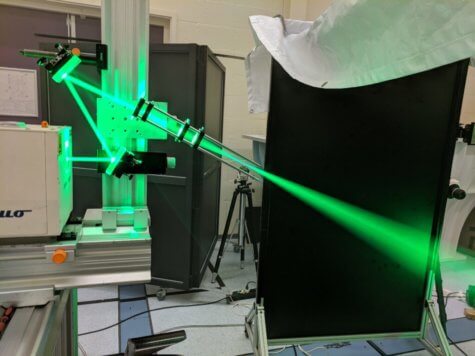PULLMAN, Wash. – Major League Baseball is back and that means one thing — homers, lots and lots of homers! Unless you’re a pitcher, baseball fans love to watch in awe as sluggers knock the ball hundreds of feet. So, how far do these home runs really travel? Although every TV broadcast seems to have an estimate on the screen these days, are you really getting an exact figure? A new study has come up with a brand new way of accurately knowing how far a baseball goes off the bat.
A team from Washington State University and Delft University of Technology say their technique improves on the traditional measuring systems which use a wind tunnel to figure out how a baseball cuts through the air.
“My lab happens to perform the most accurate test in the world of this property,” says lead author Lloyd Smith, professor in the School of Mechanical and Materials Engineering, in a university release. “Not many people care about lift and drag to the level that we do, but people do care in baseball games.”
In baseball, consistency is everything
Study authors say the average fan may not realize how much aerodynamics play a role in baseball. It turns out even very small changes in the ball can lead to major changes in drag as it flies through the air.
That’s why Major League Baseball uses only one company, Rawlings Sporting Goods, for the production of their balls. The manufacturer also has to follow strict protocols while making all of these balls — from the cork rubber pill at the center, to the wool layers around it, to the leather and stitching on the outside.
“I never thought in my wildest dreams that I would be differentiating between belly leather and back leather on a ball, but I am, and it turns out that the two kinds of leather are different on a ball, and you’ll find less belly leather than you would have a few years ago,” Smith says.
In the end, every baseball has to be uniform in terms of its weight, size, hardness, and elasticity.

Where did the home run explosion come from?
Despite all of the that, baseball fans, reporters, and players all noticed a strange thing take place starting in 2015. Everyone started hitting homers like never before.
“The assumption was that if you made the ball the same way, that those properties would always come out the same way,” Smith explains. “We found out that something changed.”
After an investigation by the league, researchers found that there was actually something different about the balls in play. There was a tiny, three-percent decrease in the ball’s aerodynamic drag — but this led to a dramatic surge in the number of home runs as balls exploded off the bats of all players.
A deeper look discovered a small change in the height of the seams in each ball which may be responsible for at least some of the change. Baseball fans refer to this as the “juiced ball” and it’s led to tremendous controversy for the sport, especially after the league reportedly attempted to change the balls back in 2021.
Moreover, study authors say traditional wind tunnel measurement techniques couldn’t accurately detect these changes. The team explains that wind tunnels measure drag forces for everything from airplanes to cars, but they do a bad job when it comes to baseballs.
“You have to hold onto the ball in some way,” Smith says, “and that means there’s always going to be some imperfection when you’re using a wind tunnel to measure drag.”
What makes the new method different?
The laser-guided speed measurement is able to precisely measure changes in speed and then figure out acceleration, the force on a ball, and the ball’s lift and drag.
“We had to go back and look at what we can do to make this even more accurate, and we did,” the researcher concludes. “It hasn’t been simple to do, and we spend a lot of time calibrating every day just to make sure that our sensors are telling us what we think they are, but we now believe that the drag measurements we’re making are going to be able to sound the alarm if there’s a change.”
The study is published in the journal Applied Sciences.
